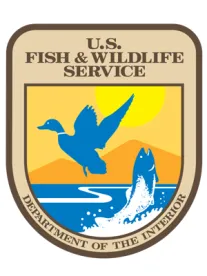On 23 March 2022, the U.S. Fish and Wildlife Service (the Service) issued a proposed rule (Proposed Rule) to reclassify the northern long-eared bat from a threatened species to an endangered species under the Endangered Species Act.1 The Service previously listed the northern long-eared bat (NLEB) as threatened because of the devastating impacts to the species from white nose syndrome (WNS) and issued an ESA Section 4(d) rule allowing an incidental “take” of NLEB subject to certain conditions. If the Proposed Rule is finalized, the 4(d) rule will cease to apply and will be replaced by the Endangered Species Act (ESA) Section 9’s full take prohibition. The Proposed Rule will have major implications for energy infrastructure development throughout the U.S., including—and in particular—wind energy development.
Interested stakeholders may weigh in on particular issues during the comment period, which is open now and closes on 23 May 2022. The Service has also set a public informational meeting and public hearing from 6:00 p.m. – 7:00 p.m. CT and 7:30 p.m. – 8:30 p.m. CT on 7 April 2022.
THE SERVICE’S NLEB UPLISTING PROPOSAL
For more than ten years, the Service has grappled with how to handle the WNS that has devastated the NLEB population. In 2015, the Service listed the NLEB as “Threatened". The accompanying 4(d) rule created take exemptions for activities such as development and operation of energy projects within the WNS zone so long as projects did not (1) result in an incidental take of bats in hibernacula, (2) alter entrances or interiors of known hibernacula, or (3) result in tree-removal in proximity to known hibernacula or maternity roosts.2
In 2020, the U.S. District Court for the District of Columbia rejected the Service’s decision to maintain the NLEB’s threatened status rather than uplisting it to endangered.3 The court remanded the Service’s listing decision to reconsider its determination and either maintains the status quo for the NLEB as threatened or list it as endangered. The court, however, did not vacate the Service’s listing decision or the 4(d) rule, meaning those decisions remain in place until the Service issues a new listing decision.
In the Proposed Rule, the Service explained the outcome of its review on remand: it would be uplisting NLEB to endangered. The primary basis for the Service’s determination was WNS: “WNS has been the foremost stressor on the northern long-eared bat for more than a decade … WNS has caused estimated northern long-eared bat population declines of 97–100% across 79% of the species’ range … [and] there are no proven measures to reduce the severity of [its] impacts.”4 The Service noted several other stressors contributing to NLEB population declines, including wind energy mortality, the effects of climate change, and habitat loss.5
IMPLICATIONS OF A NLEB ENDANGERED CLASSIFICATION
The implications of a NLEB uplisting are far-ranging, but this change may be felt most in the wind energy development world. An endangered listing would create significant new regulatory burdens for wind energy developers. New and existing projects would be required to demonstrate compliance with the ESA and minimize and/or mitigate take of NLEB. This adds a significant step to the siting and development process for new wind energy projects. Depending on project location, developers may be required to obtain an ESA Section 10 incidental take permit and accompanying habitat conservation plan. This can set back development timelines and add expense to new projects, but it can also result in substantive restrictions on the timing and maximum speed of turbine operations. That in turn has an impact on the project’s bottom line because it can reduce generation capacity for the life of the project. Even where an HCP is not required, projects that require other federal permits, such as Clean Water Act permits, may require consultation with the Service to ensure the project does not jeopardize NLEB. This too can result in operational restrictions and/or added expense and delay.
Many projects have already obtained permits demonstrating ESA compliance. As of March 2022, the Service recognizes that the wind energy industry has 16 habitat conservation plans for NLEBs in place and 13 more in development.6 In its press release announcing the Proposed Rule, the Service indicated that existing projects with ESA compliance in place or completed by end of 2022 would not be impacted by the NLEB reclassification.7 However, despite the Service’s assurances, there is potential for the Service to reopen existing incidental take permits and HCPs—particularly those for projects not completed by the end of 2022—to ensure consistency with the new listing decision. Whether an HCP could be reopened for this reason depends largely on the terms of the specific HCP.
Looking ahead, new safeguards for the NLEB may result in increased costs related to the site selection for wind energy projects, including wind turbine locations and baseline assessments for development areas. The reclassification will increase regulatory burdens for developers post-construction for monitoring and mitigation of NLEBs. In addition, as the Service works towards finalizing endangered status for the NLEB, critical habitat will be established. The location of critical habitat will further complicate wind project siting and permitting, limiting the location and range of wind power facilities in the NLEB’s range.
The Proposed Rule comes at a time when the Biden Administration is implementing policy to scale-up renewable energy deployment across the nation.8 The listing may contribute to staffing bottlenecks within the Service that could further slow development timelines and threaten the Biden Administration’s plan to increase wind power generation. Navigating this new world will require cooperation and proactive negotiations with the Service in order to minimize impacts on the NLEB without compromising critical infrastructure needs. Interested stakeholders should submit comments on the Proposed Rule before 23 May 2022.
ENDNOTES
1 See generally Endangered and Threatened Wildlife and Plants; Endangered Species Status for Northern Long-Eared Bat, 87 Fed. Reg. 16,442 (Mar. 23, 2022) (to be codified in 50 C.F.R. Part 17).
2 For more on the Service’s 4(d) rule, see K&L Gates’ prior alert on that topic.
3 Center for Biological Diversity v. Everson, 435 F. Supp. 3d. 69 (D.D.C. 2020). For more on the court’s remand of the Service’s threatened listing decision and 4(d) rule, see K&L Gates’ prior alert on that topic.
4 Id. at 16446, 16448.
5 Id. (“In 2020, northern long-eared bats were at risk from wind mortality in approximately 49% of their range, based on the areas where wind turbines were in place and operating,” most of which is “caused by direct collisions with moving turbine blades.”)
6 See USFWS, Service proposes to reclassify northern long-eared bat as endangered under Endangered Species Act, Press Release, Mar. 22, 2022 available here.
7 Id. (“Many wind energy and transportation projects already have ESA compliance in place that will remain if reclassification to endangered status is finalized. For instance, the Service has completed a programmatic consultation with the Federal Highway Administration, the Federal Railroad Administration and the Federal Transit Administration that covers transportation projects throughout the entire range of the northern long-eared bat. As such, projects covered under this consultation and completed before the end of the year would not be impacted by the reclassification.”)
8 The White House, Fact Sheet: Biden-Harris Administration Races to Deploy Clean Energy that Creates Jobs and Lowers Costs, January 12, 2022, available here.







 />i
/>i

